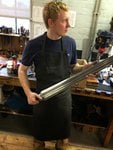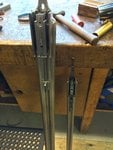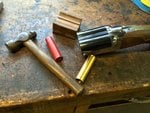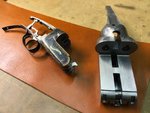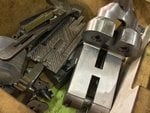GrauGeist
Generalfeldmarschall zur Luftschiff Abteilung
Is it just me, or is there actually a discoloration at the leading and trailing edges of those cracks?
Discoloration not being from discharge, but more like an existing impurity in the brass. The condition of that brass is highly suspect, Matt...perhaps look at the intact casings to see if there's any deformities on the verge of cracking.
I'd suspect poor brass quality there and if confirmed, demand a refund.
Discoloration not being from discharge, but more like an existing impurity in the brass. The condition of that brass is highly suspect, Matt...perhaps look at the intact casings to see if there's any deformities on the verge of cracking.
I'd suspect poor brass quality there and if confirmed, demand a refund.

 but rds 16-18 would fire and it was more prone to Remy but occured some with CCI.
but rds 16-18 would fire and it was more prone to Remy but occured some with CCI.